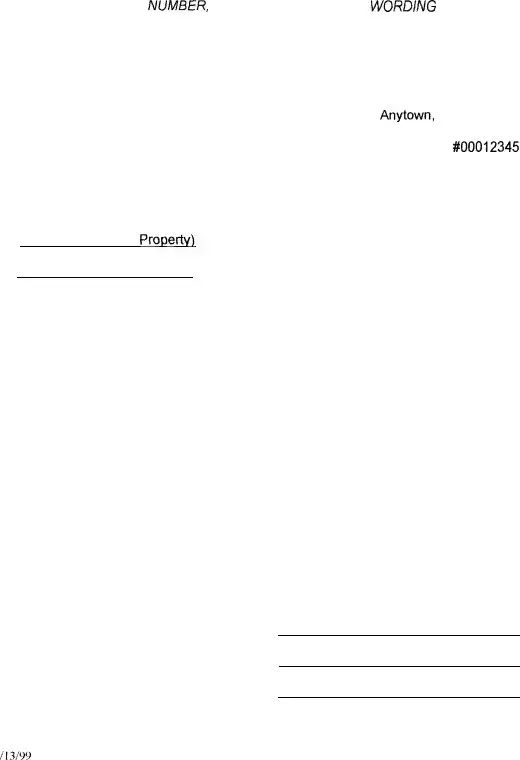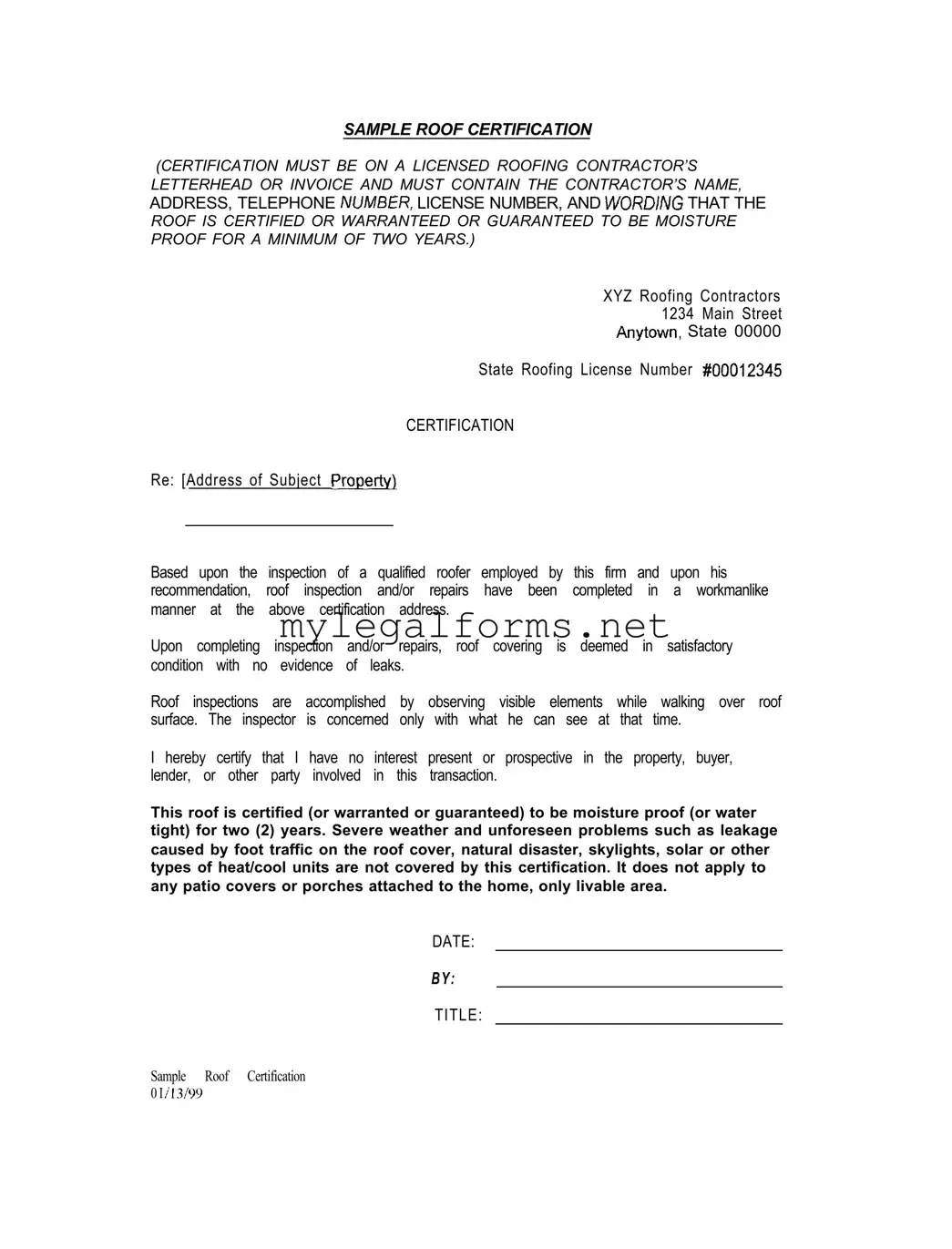
SAMPLE ROOF CERTIFICATION
(CERTIFICATION MUST BE ON A LICENSED ROOFING CONTRACTOR’S LETTERHEAD OR INVOICE AND MUST CONTAIN THE CONTRACTOR’S NAME,
ADDRESS, TELEPHONE NUMSER, LICENSE NUMBER, AND WORDlNG THAT THE
ROOF IS CERTIFIED OR WARRANTEED OR GUARANTEED TO BE MOISTURE PROOF FOR A MINIMUM OF TWO YEARS.)
XYZ Roofing Contractors
1234 Main Street
Anytown, State 00000
State Roofing License Number #00012345
CERTIFICATION
Re: [Address of Subject Property)
Based upon the inspection of a qualified roofer employed by this firm and upon his recommendation, roof inspection and/or repairs have been completed in a workmanlike manner at the above certification address.
Upon completing inspection and/or repairs, roof covering is deemed in satisfactory condition with no evidence of leaks.
Roof inspections are accomplished by observing visible elements while walking over roof surface. The inspector is concerned only with what he can see at that time.
I hereby certify that I have no interest present or prospective in the property, buyer, lender, or other party involved in this transaction.
This roof is certified (or warranted or guaranteed) to be moisture proof (or water tight) for two (2) years. Severe weather and unforeseen problems such as leakage caused by foot traffic on the roof cover, natural disaster, skylights, solar or other types of heat/cool units are not covered by this certification. It does not apply to any patio covers or porches attached to the home, only livable area.
DATE:
BY:
TITLE:
Sample Roof Certification 0I/13/w

